Is The Puzzling Miami Circle Much Older Than Previously Thought?
Ellen Lloyd - AncientPages.com - The ancient Miami Circle is a fascinating archaeological site in Florida that offers important knowledge about American history. While investigating the site, scientists discovered certain anomalous artifacts that shouldn’t be there. Who were the true creators of the Miami Circle? Why have some researchers questioned the site’s age and authenticity?
The Miami Circle was accidentally discovered in 1998 when property developer Michael Baumann who owned the land, tore down an apartment complex. Before proceeding with the building of his luxury apartments, he was obliged to conduct a routine archaeological field survey of the site.
The Miami Circle, as seen from above. Credit:EduardoValle CC BY-SA 3.0 - Culture Trip
To his surprise, he found a circular pattern of holes in the limestone bedrock. Archaeologists examined the site, and radio-carbon testing revealed the site was much older than scholars expected.
When John Ricisak, a specialist in the County Historic Preservation department, did a radiocarbon dating, it turned out the wood was between 1,800–2,000 years old, but does this imply the circle is just as old? This is a question scientists cannot agree upon. Some scholars maintain that the circle is younger than the wood, and some suggest that the entire Miami Circle is at least 3,000-year-old, or even much older!
What is certain is that the Miami Circle is the only known evidence of a prehistoric permanent structure cut into the bedrock in the Eastern United States.
Was The Miami Circle Created By The Olmec or Mayan Civilizations?
It is generally assumed the Miami Circle was created by the Tequesta Indians, a group of Southern Florida native Americans who inhabited the area from about 2,000 years ago to after the Spanish arrived. The lost tribe of the Tequesta Indians never became powerful and numbered only 800. When Spanish Florida was traded to the British, the Tequesta Indians started to die out due to settlement battles, slavery, and disease. All we have left of this lost Native American tribe are the artifacts they left on the site where they lived.
While examining the site, archaeologists found tools associated with the Tequesta Indians. Among these objects were shell tools, shark teeth, and other items of aquatic origin.
However, other discoveries contradict the theory the Miami Circle was built by this long-gone Native American tribe.
Some of the artifacts recovered from the Miami Circle's holes such as, for example, two completely untouched basalt axe heads, were definitely not used by the Tequesta Indians. Studies revealed the basalt was from the region of Macon, Georgia, some 600 miles (970 km) away. Beneath the Miami Circle, archaeologists also found animal remains of a dolphin, sea turtle, and a 5-foot (1.5 m) long shark skeleton.
This suggests this had once been a ritual site used for ceremonial purposes. There is also a small group of scientists who say “that the structure's puzzling ring-shaped array of 30 rectangular "basins" are more analogous to England's "Stonehenge" - once serving as the "foundation slots" for a ring of 30 upright stones, which once stood in the currently surviving geometric bedrock basins -"an archeo-astronomical "stonehenge-like device," for observing the solstices and equinoxes, as well as other astronomically-based ceremonial uses ..." 1
In an attempt to identify the original builders of the Miami Circle some scientists started to speculate suggesting the site was created by the Olmec or Mayan civilization. It was claimed the site is much older than previously thought and a legacy of a “sophisticated people who lived here long before the Tequestas were in the area, perhaps as much as 10,000 to 13,000 years ago.” 1
“Of all the lost civilizations of Mesoamerica, that of the Olmec is the oldest and the most mystifying. We know very little about the Olmec - a mysterious culture considered by many as the Mother Civilization of Mesoamerica that laid the foundation for the Mesoamerican cultural traditions.
They arose suddenly and with no apparent prior gradual development. It is difficult to precisely locate the Olmec civilization in time.” 2
Who the Olmecs were and where they came from is still a mystery, but it’s unlikely they were the builders of the ancient Miami Circle.
Scientists investigating the Maimi Circle. Credit: Trail of Florida's Indian Heritage
Without solid evidence, it’s difficult to link the Miami Circle to the Olmec or Mayan civilization. No artifacts of Central American origin have been found at the site.
It’s, of course, possible the Miami Circle is much older than originally presumed, and the site may already have existed when the Tequesta Indians reached the area.
What can be said with certainty is that the Miami Circle is of unique historical, cultural, and scientific importance. Its existence offers a far-more ancient and far more interesting history than anyone dared imagine. North America has a rich ancient history and several prehistorical mysteries.
Updated on July 20, 2024
Written by Ellen Lloyd – AncientPages.com
Copyright © AncientPages.com All rights reserved. This material may not be published, broadcast, rewritten or redistributed in whole or part without the express written permission of AncientPages.com
Expand for referencesMore From Ancient Pages
-
 Five Witchcraft Myths Debunked By An Expert
Featured Stories | Oct 27, 2023
Five Witchcraft Myths Debunked By An Expert
Featured Stories | Oct 27, 2023 -
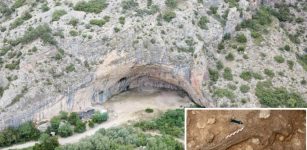 Rare Upper Paleolithic Human Remains Discovered In The Iberian Peninsula
Archaeology | Aug 12, 2021
Rare Upper Paleolithic Human Remains Discovered In The Iberian Peninsula
Archaeology | Aug 12, 2021 -
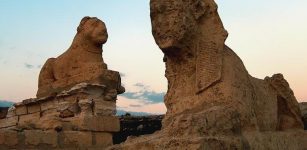 Thriving Faiyum Oasis Declined And Was Abandoned Due To Climate Change
Archaeology | Jan 26, 2021
Thriving Faiyum Oasis Declined And Was Abandoned Due To Climate Change
Archaeology | Jan 26, 2021 -
 What Does DNA From 1,700-Year-Old Individuals Dated To The Three Kingdoms Period Tell About Ancient And Modern Korea?
Archaeology | Jun 21, 2022
What Does DNA From 1,700-Year-Old Individuals Dated To The Three Kingdoms Period Tell About Ancient And Modern Korea?
Archaeology | Jun 21, 2022 -
 The Tuli Mummy: Botswana’s Only Ancient Mummified Human Body Discovered So Far
Ancient History Facts | Oct 14, 2016
The Tuli Mummy: Botswana’s Only Ancient Mummified Human Body Discovered So Far
Ancient History Facts | Oct 14, 2016 -
 Legendary Lost Island Of Gold Of The Mysteriously Vanished Srivijaya Civilization Found Underwater
Archaeology | Oct 25, 2021
Legendary Lost Island Of Gold Of The Mysteriously Vanished Srivijaya Civilization Found Underwater
Archaeology | Oct 25, 2021 -
 Unraveling The Mystery Of A Lost Biblical Underground World – Is A Precious Ancient Artifact The Answer?
Ancient Mysteries | May 30, 2018
Unraveling The Mystery Of A Lost Biblical Underground World – Is A Precious Ancient Artifact The Answer?
Ancient Mysteries | May 30, 2018 -
 Goddess Xi Wangmu (Xiwangmu) Who Controlled Life, Death, Creation And Talked Directly To Humans In Chinese Mythology
Chinese Mythology | Mar 12, 2020
Goddess Xi Wangmu (Xiwangmu) Who Controlled Life, Death, Creation And Talked Directly To Humans In Chinese Mythology
Chinese Mythology | Mar 12, 2020 -
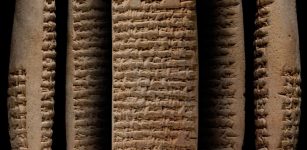 Mystery Of The Proto-Elamite Tablets – Cracking The World’s Oldest Undeciphered Writing
Artifacts | Oct 29, 2012
Mystery Of The Proto-Elamite Tablets – Cracking The World’s Oldest Undeciphered Writing
Artifacts | Oct 29, 2012 -
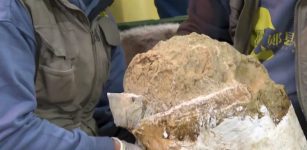 Fossilized Million-Year-Old Human Skull Of Yunxian Man Excavated In China
Archaeology | Jan 10, 2023
Fossilized Million-Year-Old Human Skull Of Yunxian Man Excavated In China
Archaeology | Jan 10, 2023 -
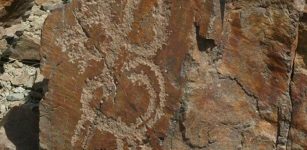 Petroglyphs Hold Secrets To 14,000 Years Of Human Life In Iran
Archaeology | Apr 30, 2020
Petroglyphs Hold Secrets To 14,000 Years Of Human Life In Iran
Archaeology | Apr 30, 2020 -
 New York’s Queen Of Thieves Fredericka Mandelbaum Opened Marm’s Grand Street School For Criminals
Featured Stories | Jul 24, 2024
New York’s Queen Of Thieves Fredericka Mandelbaum Opened Marm’s Grand Street School For Criminals
Featured Stories | Jul 24, 2024 -
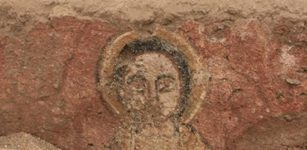 1,000-Year-Old Paintings Unearthed In Sudan – Documented By The Polish Researcher
Archaeology | Sep 25, 2022
1,000-Year-Old Paintings Unearthed In Sudan – Documented By The Polish Researcher
Archaeology | Sep 25, 2022 -
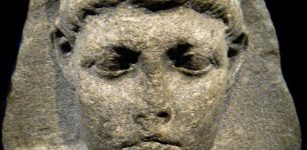 ‘Little Caesar’: Forgotten ‘King Of Kings’ Who Died Very Young
Featured Stories | May 11, 2020
‘Little Caesar’: Forgotten ‘King Of Kings’ Who Died Very Young
Featured Stories | May 11, 2020 -
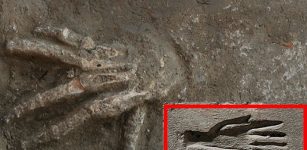 Mysterious Ancient Egyptian Severed Hands Practice Investigated By Scientists
Archaeology | Apr 1, 2023
Mysterious Ancient Egyptian Severed Hands Practice Investigated By Scientists
Archaeology | Apr 1, 2023 -
 Glass Technology Was Known In Sahara Centuries Before The Arrival Of Europeans
Ancient Technology | Jan 20, 2018
Glass Technology Was Known In Sahara Centuries Before The Arrival Of Europeans
Ancient Technology | Jan 20, 2018 -
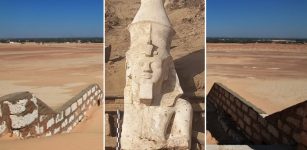 Huge Statue Of Pharaoh Ramesses II Unearthed In The Ancient City Of Hermopolis
Archaeology | Mar 4, 2024
Huge Statue Of Pharaoh Ramesses II Unearthed In The Ancient City Of Hermopolis
Archaeology | Mar 4, 2024 -
 Summer Solstice Festivals Around The World – Midsummer Celebration Is An Ancient Tradition Still Alive
Ancient Traditions And Customs | Jun 21, 2024
Summer Solstice Festivals Around The World – Midsummer Celebration Is An Ancient Tradition Still Alive
Ancient Traditions And Customs | Jun 21, 2024 -
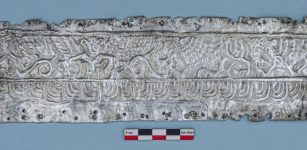 Unique Plate Of Winged Scythian Gods And Walking Griffons Discovered In Middle Don
Archaeology | Nov 19, 2021
Unique Plate Of Winged Scythian Gods And Walking Griffons Discovered In Middle Don
Archaeology | Nov 19, 2021 -
 Galileo Galilei’ Long-Lost Letter Reveals His Attempt To Fool The Inquisition And Make Science Independent From Religion
Archaeology | Sep 22, 2018
Galileo Galilei’ Long-Lost Letter Reveals His Attempt To Fool The Inquisition And Make Science Independent From Religion
Archaeology | Sep 22, 2018


